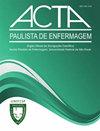A scoping review of excessive use of mammography screening
IF 1
4区 医学
Q3 NURSING
引用次数: 0
Abstract
Objectives: To identify how scholars define excessive screening for women without risk of developing breast cancer, examine the determinants (barriers and facilitators) of excessive use of mammography screening, and describe the rates of observations of excessive use mammography screening. Methods: Scoping review based on a search in May 2022 in six electronic health databases and libraries. Articles included were peer-reviewed articles, in any language and year of publication. Results: In a sample of 18 articles, published from 1991 onwards, most of them from the United States, the excessive use of mammography were defined as the intention or performance of mammography outside the recommended age or interval range, among women with limited life expectancy, in coexisting, organized and opportunistic programs. The rates of observations of excessive use of mammography screening in the selected studies ranged from 1.4% to 87,2%. Facilitators for excessive mammography are related concerns of getting cancer; to the medical advice, especially from specialists; and to the increased access to tests. The most exposed to excessive screening are women with higher levels of education and income. Barriers for excessive mammography included guidance in consultations about the harm of mammography and life expectancy by general practitioners, particularly those in primary care. Conclusion: Our study identified that the excessive use of mammography screening has a high prevalence when done as screening and is permeated by multi-level factors. Our list of determinants can provide some guidance for future studies aiming to de-implement the low-value care of excessive mammography screening.过度使用乳房X光检查的范围审查
目的:确定学者如何定义没有患癌症风险的女性过度筛查,检查过度使用乳房X光筛查的决定因素(障碍和促进因素),并描述过度使用乳房X线筛查的观察率。方法:基于2022年5月在六个电子健康数据库和图书馆中的搜索进行范围界定审查。收录的文章都是经过同行评审的文章,采用任何语言和出版年份。结果:在1991年以后发表的18篇文章样本中,其中大多数来自美国,过度使用乳房X光检查被定义为在预期寿命有限的女性中,在共存、有组织和有机会的项目中,在建议的年龄或间隔范围之外进行乳房X光检测的意图或表现。在选定的研究中,过度使用乳房X光检查的观察率在1.4%至87.2%之间。过度乳房X光检查的推动者与患癌症有关;听取医学建议,尤其是专家的建议;以及获得测试的机会增加。受过度筛查影响最大的是受教育程度和收入较高的女性。过度乳房X光检查的障碍包括全科医生,特别是初级保健医生在咨询中对乳房X光摄影的危害和预期寿命的指导。结论:我们的研究表明,过度使用乳房X光筛查在筛查时有很高的患病率,并渗透着多层次的因素。我们的决定因素列表可以为未来旨在取消过度乳房X光检查的低价值护理的研究提供一些指导。
本文章由计算机程序翻译,如有差异,请以英文原文为准。
求助全文
约1分钟内获得全文
求助全文
来源期刊

Acta Paulista De Enfermagem
NURSING-
CiteScore
1.40
自引率
0.00%
发文量
92
审稿时长
4 weeks
期刊介绍:
Acta Paulista de Enfermagem – (Acta Paul Enferm.), ISSN 1982-0194, is a [bilingual] technical-scientific electronic publication of the Escola Paulista de Enfermagem – EPE, Universidade Federal de São Paulo – UNIFESP.
Our mission: To disseminate the scientific knowledge generated within the rigor of research and ethics methodology.
Our objective: To publish results of original research for advancement of practices of clinical, surgical, and management nursing, as well as education, research, and information and communication technology.
 求助内容:
求助内容: 应助结果提醒方式:
应助结果提醒方式:


